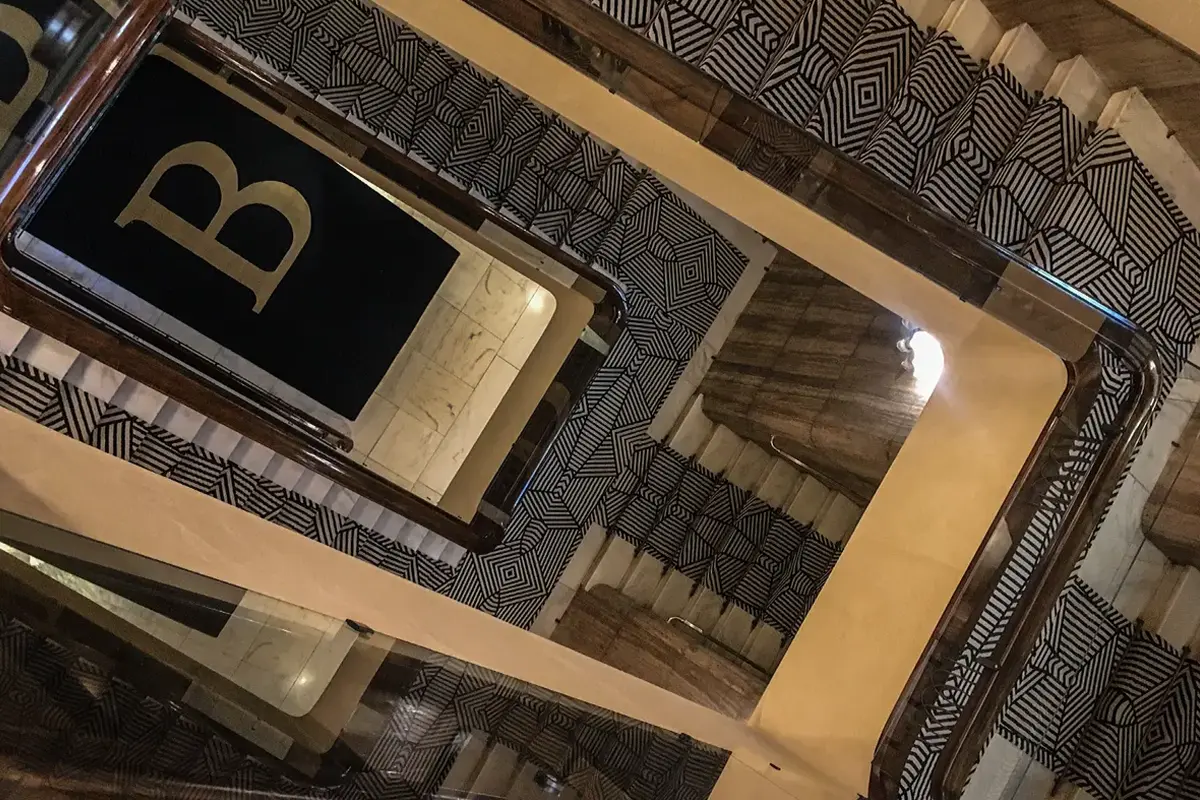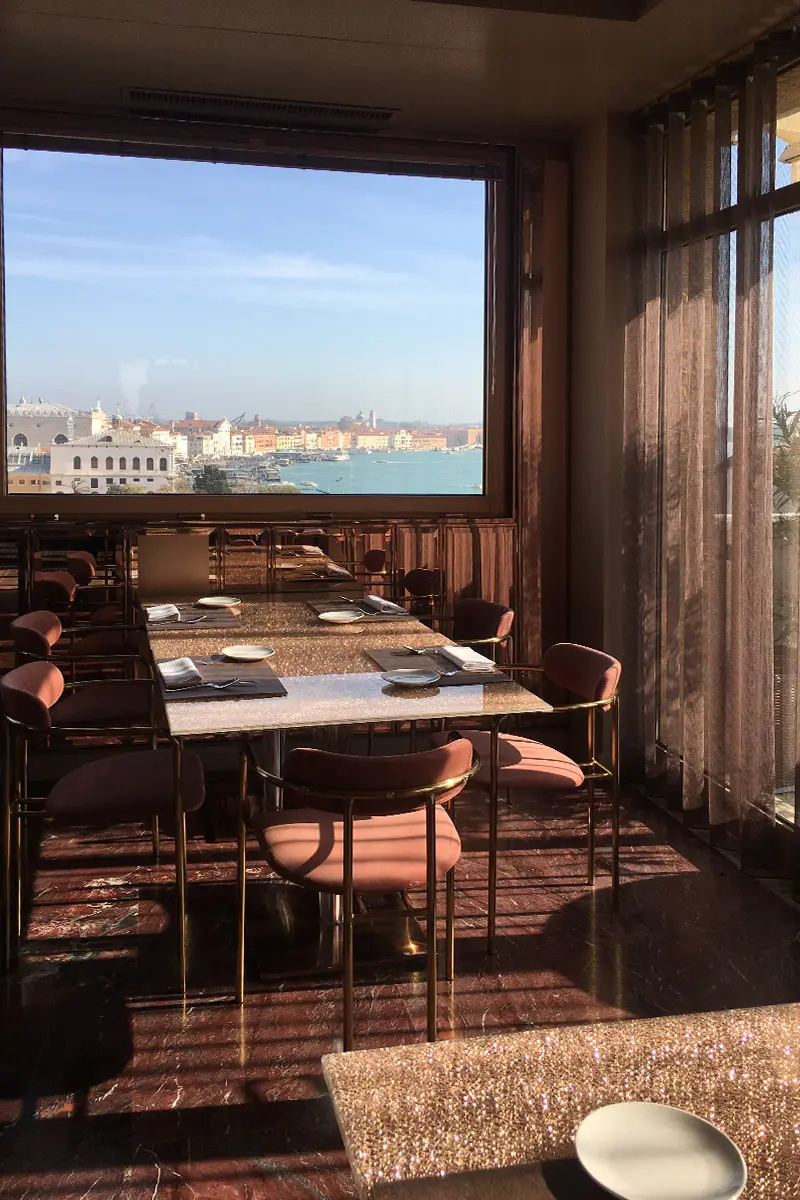Between art-deco and byzantine features, the Bauer Grunwald Palace is a veritable style crossword. Artcurial auction house engages its unique pieces to a trade
Artcurial reveals the upcoming hotel auction in Venice
With the resurrection of one of the oldest Venice palaces to host tourists, Artcurial takes upon the decorative heritage of the Bauer Palace. An action house with renowned initiatives in the world of luxurious travel emblems all around the globe, Artcurial sold over 12.500 antique pieces in the last six years. They achieved a global hotel sale record in April 2018 with the Ritz Paris auction reaching a total of 1. 721 167 €.
Situated on Venice’s Grand Canal, soaked in crisp 700 elements colliding with subversive 1930 surfaces, The Bauer Hotel closed its door for restoration on the 1st of November. Its gates will reopen for clients in 2025 under the Rosewood Hotels & Resorts group.
The Venetian architect Alberto Torsello will guide the building’s restyle and restructure alongside Bar Studio, an interior design group. The project aims for the original facade renewal, embracing changes on the spiral staircase and other significant interior elements with a strong focus on the building’s sustainability.
While achieving this mending operation, the new Bauer hotel will obtain Green Pass, Casa Klima, and Leed Gold certificates.
Some key elements to enrich the new affluent structure will be an Italian-style roof garden overlooking the city, a wellness facility, and an outdoor pool with a bar on the eighth floor. Moreover, the project integrates a luxury retail space of approximately 3,000-meter squares into the experience offered by the Bauer hotel.
Bauer Palazzo Hotel is an ornamentation cocktail
The Bauer Grunwald Palace in Venice is about blissful marriages of styles, power, and histories, all culminating over the 18th-century building raised on the San Moisè square. Here, between Piazza San Marco and the Grand Canal, a hotel opened in 1880 after the wedding of the young Austrian entrepreneur Julius Grunwald and the daughter of the influential Mr. Bauer, director of the municipal company. Effortlessly, it became a safe but opulent space for high society members who often chose the Bauer hotel for their meetings.
A Byzantine facade mixed with an Art-Deco style
Acquired by the Grunwald heirs, the place survived until 1930. Shipbuilder Arnaldo Bennati took its lead by buying the structure and soon began a restructuring process that would last ten years. At last, in 1949, the new Bauer exhibited a Byzantine facade conveying a wing designed in the Art-Deco style. It kept its bar and restaurant, with an occupancy of 210 rooms (191 in the main building and 19 in the Grunwald residence right next door).
However, the new Bauer hotel wouldn’t sustain the same architectural splendor representing Venice once its modernization began. Arnaldo Bennati added central heating and air conditioning – a rarity in Venice. He administered a coldly impersonal style with the San Moisè square facade contrasting the original 700 exteriors facing the Canal Grande. But Venice is a city of paradoxes and contradictions where the new Bauer Hotel could fit in seamlessly.
With its reopening in 1949, the palace gained an unparalleled attraction with the Seventh Heaven terrace inauguration on the 7th floor. It remains the highest spot in Venice, luring through a breathtaking view over the lagoon’s waters and the city’s Bell Towers.
The Bauer Hotel
In 1997, the Bauer Hotel undertook a second renovation extending over two years. Nevertheless, the Bauer Palace kept its original identity while evolving toward constant innovation. It now mixes two imaginaries: one from 1930, a tribute to the Bauer golden age, and the other neo-gothic-byzantine bringing together everything sought in Venice, with its antique furniture, ornamented walls, and an awing view over the Grand Canal.
A map of desirable objects
The entrance breaks the retinal habits gained in the city of the lagoon. It guards a Venice wall-sized map with halls embellished in Murano glass details and large leather sofas.
All the features hint toward a Venetian identity, but the overall interior steals from other Italian cities; it is nothing like the other Venetian Palaces. Jacquard silk, fabrics from Rubelli or Bevilacqua, and Baroque moldings line the walls of the hotel’s 191 rooms and suites with lacquered chests of drawers, Murano chandeliers, upholstery enveloped seating and headboards.
But all is broken by a 50’s tone of voice overwhelming the surfaces and decorations. Square mirrors, dark marble, an emblematic art-deco infinite rug covering the central spiral staircase, leather-wrapped sofas, and minimal lamps – all the detail insertions beg to escape Venice.
The Royal Suite of Bauer Grunwald Palace
Bauer Grunwald Palace dedicated its halls, Harlequin Club, and lounges to hosting ministers, royal families, and intellectuals arriving from all over the world. The 100 square Royal Suite with its terrace overlooking the Grand Canal is where Elisabeth Taylor, Al Pacino, Prince Charles, and Camilla sojourned, enjoying the private dinner with a view.
From silver lining, precious breakfast serving items, and doorbells to the very tables or chairs on the Seventh Heaven terrace, all the original pieces dating from the 1930 hotel restoration will be available for the Artcurial action in Spring 2023. The hotel’s most loyal guests, alongside art lovers, will be able to indulge in buying some of the most timely decor pieces that once kept company to celebrities and intellectuals.
Selling histories. The art of impregnating decor items with meaning
In November, Artcurial celebrated ten years of their Italian venue, directed by Emilie Volka. Leading over twenty-five departments, the french auction house upholds its status on the Italian market as much as on the international scene. From jewels, automobiles, or watches, to fashion items and design monuments – Artcurial choreographs a selection of desirable objects intersecting over divergent cultures and time periods.
In the Hotel auction department, Artcurial leads the sector, having sold pieces from Tour D’Argent (Paris), Ritz Paris, Plaza Athénée Restaurant, and Four Seasons (Paris). The Bauer Grunwald Palace sale will mark the first Italian travel property, manifesting historical value and its aesthetic imprint in the Venetian art field. In contemporary circumstances, auctions aren’t merely some merchant opportunities for sellers and buyers but represent a cultural landmarks portal standing the test of time.
Jacquard motifs: a Venetian reiteration
With the purchase of the Venetian hotel’s space pieces, any guest will have the chance to reassemble a memory, returning in a moment spent at the statue-ornamented De Pisis restaurant or cuddled in the lavished corners of the 100 mq Suite Room. All the pieces date back to Bauer’s inception with some more recent additions from the latest restoration.
Over 500 auction lots and more than 4000 pieces highlight the hotel’s distorted coquetry, with powdery pearl gray sofas coying against wooden sejour tables. Jacquard motifs steal the scene in their Venetian reiteration, patronizing shades of baby pink and mint greens. With its tangling waters and rarified empty corners, Venice mimics that mal de debarquement syndrome, when you can’t quite shake off the feeling of navigating waves.
A stay at the Bauer Grunwald evokes the same impregnated sensation of being hidden in a concealed sphere compressing all time-marking events. A society in itself, a sober architecture carousel, every room an island of objectified beauty.
Artcurial
Founded in 2002, Artcurial quickly became the leading French auction house. Since then the firm has continually innovated, launching new specialties such as Design and Street Art. With sales taking place mainly in Paris, Monaco, and Marrakech, Artcurial’s expertise extends beyond the French borders, exporting its know-how through representative offices in Austria, Belgium, Germany, Italy, and Spain, subsidiaries in Monte-Carlo and Morocco as well as having a presence in Beijing and Tel Aviv and holding annual exhibitions in New York.




















